Aceh industry recovering from 2004 tsunami
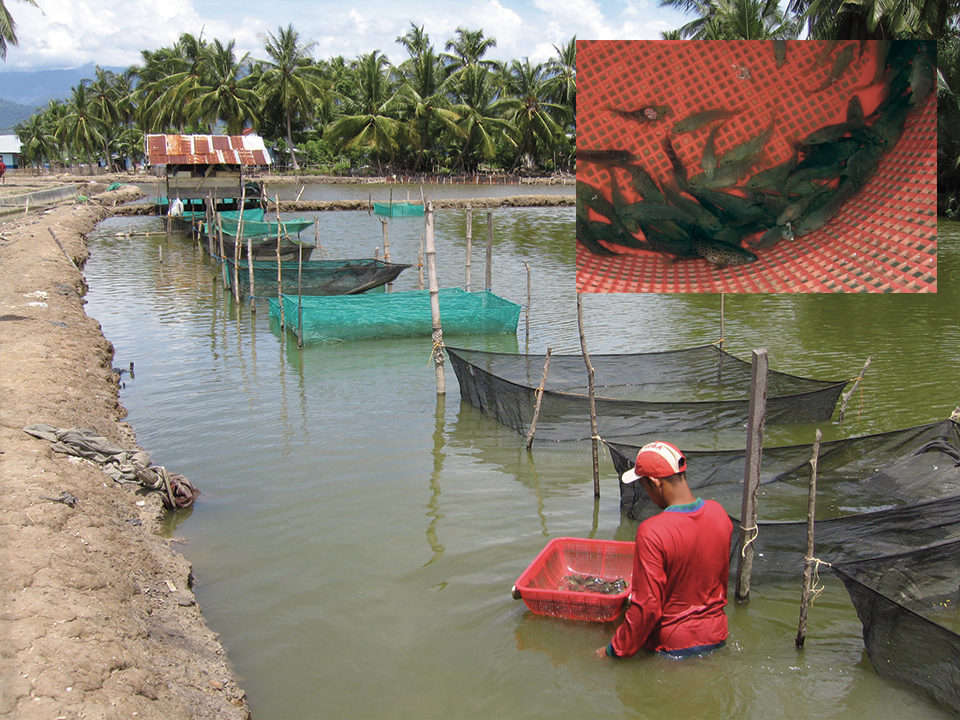
The province of Nanggroe Aceh Darussalam (Aceh) in Indonesia was one of the areas worst affected by the December 2004 tsunami. More than 150,000 people were killed, and many more disappeared. Houses and infrastructure were destroyed and damaged, and many rural communities were severely affected by the tsunami.
The aquaculture sector, an important source of livelihood for many in the province, was particularly hard hit, with many coastal ponds (known locally as “tambak”) and associated infrastructure damaged or destroyed. Nearly all the hatcheries in Aceh were put out of business.
More than three years later, Aceh is slowly getting back to business. While the major focus of aquaculture in Aceh is on shrimp farming, the province also produces marine and brackishwater finfish for local consumption and export, with potential for further development.
Brackishwater ponds
The mainstay of finfish culture in brackishwater ponds is milkfish (Chanos chanos). Milkfish are ideally suited to the extensive style of aquaculture that is traditionally practiced in Aceh, as they can be farmed with minimal inputs, relying on natural pond production as their feed source. The main market for milkfish is local – the fish are a staple of the Acehnese diet and widely supplied from coastal ponds throughout the province, including into the remote inland districts.
Similarly, tilapia – Oreochromis mossambicus and O. niloticus – are gaining popularity for grow-out in low-salinity ponds or during the wet season, when pond salinities are depressed by heavy rainfall.
There is increasing interest in farming carnivorous species, particularly barramundi or Asian sea bass (Lates calcarifer) because they bring a higher price than milkfish or tilapia. Barramundi fingerlings are caught locally or imported from hatcheries in Bali.
Sea cage culture
Sea cage aquaculture has been practiced on some of the adjacent islands such as Pulau Simeulue and Pulau Weh (Sabang). Much of this production has involved “fattening” wild-caught fish for the live reef food fish trade. Late juvenile or subadult fish are caught using hooks and lines, then held and fed in cages until picked up by a live fish transport vessel.
More recently, efforts to rehabilitate the sea cage aquaculture sector have utilized seedstock produced in hatcheries in Bali. The high-value fish include such species as tiger grouper (Epinephelus fuscoguttatus) and mouse grouper (Cromileptes altivelis).
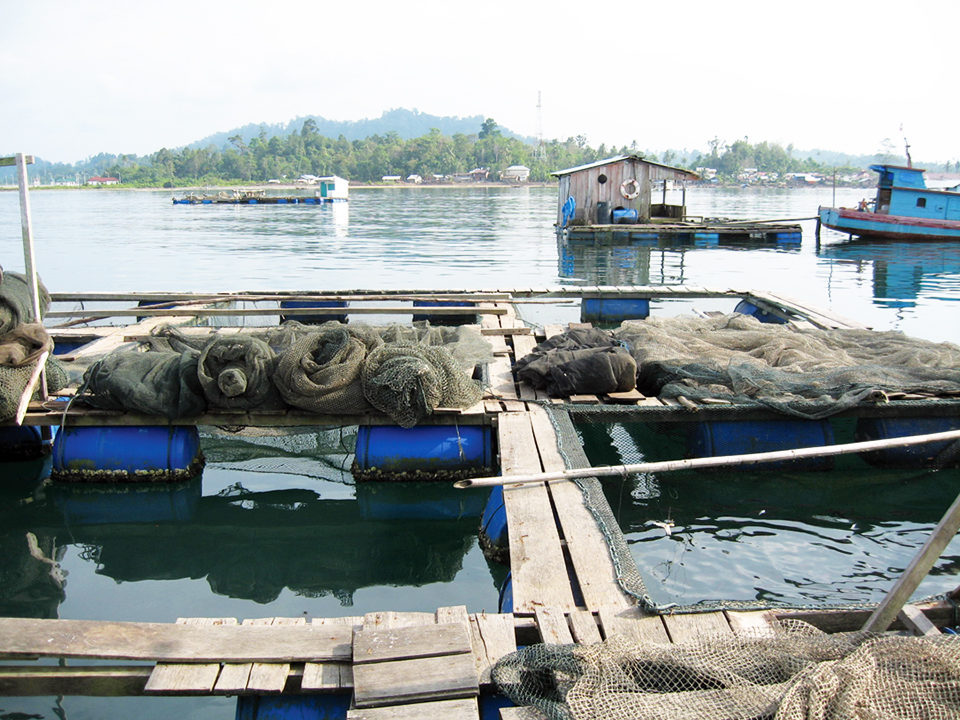
Nursery culture in ponds
Aceh is home to a specialized grouper nursery culture industry. Tiger grouper seed is transported by air from Bali via Medan and nursed in small cages in coastal ponds. The fish are held for about one month and grow from a length of 2 to 3 cm to 7 to 10 cm. They are fed on small fish (mostly gobies) collected from the ponds or “trash” fish collected locally. Green grouper (E. coioides) fingerlings are collected locally and also nursed in these ponds.
Following the nursing period, the juvenile fish are sent back to Medan, where they are distributed to sea cage farms in Indonesia, Malaysia or Singapore, as well as other parts of the region, for grow-out to market size.
This small-scale industry provides livelihoods for many tsunami-affected aquaculture farmers along the northeast coast of Aceh. Recent surveys suggested over 1,000 farmers are involved in one district, producing over U.S. $4.5 million worth of grouper fingerlings annually. The industry continues to grow rapidly.
Government support
The government of Indonesia and the provincial government of Nanggroe Aceh Darussalam provide support for aquaculture development in Aceh. The provincial government operates a hatchery on Pulau Simeulue, although it was badly damaged in the earthquake and tsunami before it became operational. The facility is being rehabilitated through support provided by the Indonesian government and the Asian Development Bank under the Earthquake and Tsunami Emergency Support Project. Expected to be operational by mid-2008, the hatchery has an important role to play in providing seedstock for marine finfish cage-farming activities on Pulau Simeulue, which presently rely on wild seed or imported stocks.
Located near the provincial capital, Banda Aceh, the national Brackishwater Aquaculture Development Centre (BADC) Ujung Batee is one of 12 technical implementation units run by the directorate general of aquaculture within the Ministry of Marine Affairs and Fisheries. BADC Ujung Batee functions as a seed production center for milkfish and grouper. It also provides technical support services, such as disease testing and diagnostics, to the aquaculture industry.
Although BADC was badly damaged in the tsunami, it is being rebuilt by the Australian government through the Australia Indonesia Partnership for Reconstruction and Development. The Australian Centre for International Agricultural Research is supporting a capacity-building project for BADC staff to strengthen the role of the center in supporting aquaculture rehabilitation and development in Aceh.
Market challenge
Despite the trauma of 30 years of civil unrest and the horrific impacts of the December 2004 tsunami, aquaculture in Aceh is recovering with the support of Indonesian and international agencies. The challenge for the future is to provide aquaculture farmers in Aceh with effective services to produce farmed finfish that meet changing market needs, particularly with regard to food safety requirements for export markets, so marine and brackishwater finfish aquaculture in Aceh can continue to provide livelihoods for coastal communities.
(Editor’s Note: This article was originally published in the March/April 2008 print edition of the Global Aquaculture Advocate.)
Now that you've reached the end of the article ...
… please consider supporting GSA’s mission to advance responsible seafood practices through education, advocacy and third-party assurances. The Advocate aims to document the evolution of responsible seafood practices and share the expansive knowledge of our vast network of contributors.
By becoming a Global Seafood Alliance member, you’re ensuring that all of the pre-competitive work we do through member benefits, resources and events can continue. Individual membership costs just $50 a year.
Not a GSA member? Join us.
Authors
-
Michael Rimmer, Ph.D.
Senior Research Fellow
James Cook University
Brackishwater Aquaculture Development Centre
Ujung Batee, Nanggroe Aceh Darussalam, Indonesia[117,97,46,109,111,99,46,115,117,109,105,114,112,105,64,112,114,97,95,104,101,99,97]
-
Michael J. Phillips, Ph.D.
Environment Specialist
Research and Development Program Manager
Network of Aquaculture Centres in Asia-Pacific
Bangkok, Thailand
Tagged With
Related Posts

Responsibility
A look at integrated multi-trophic aquaculture
In integrated multi-trophic aquaculture, farmers combine the cultivation of fed species such as finfish or shrimp with extractive seaweeds, aquatic plants and shellfish and other invertebrates that recapture organic and inorganic particulate nutrients for their growth.
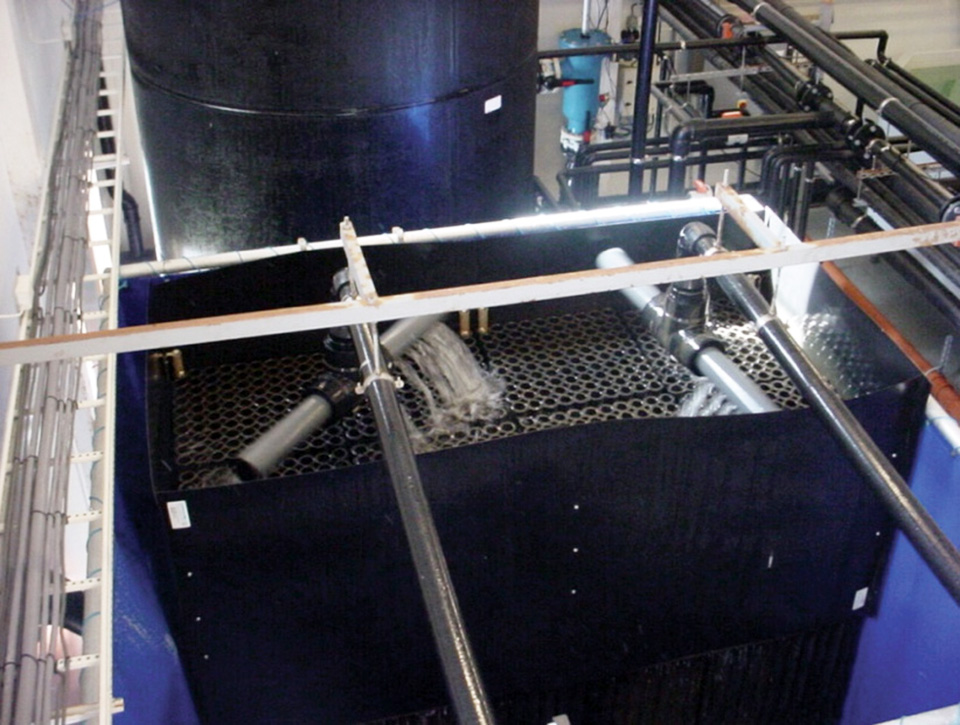
Innovation & Investment
A review of unit processes in RAS systems
Since un-ionized ammonia-nitrogen and nitrite-nitrogen are toxic to most finfish, controlling their concentrations in culture tanks is a primary objective in the design of recirculating aquaculture systems.
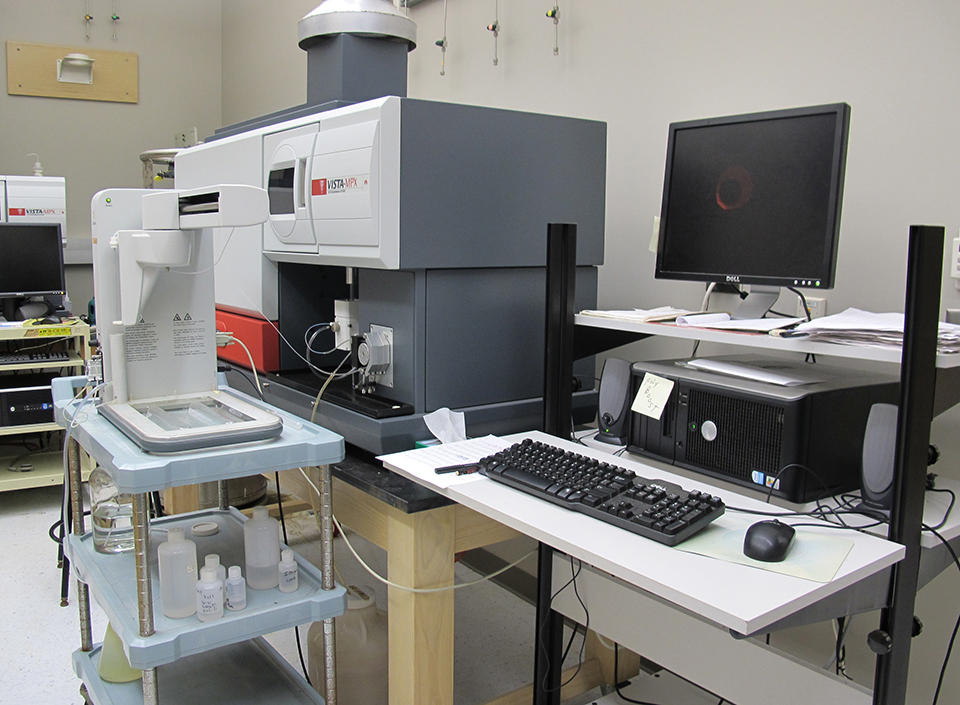
Responsibility
Accuracy of custom water analyses varies
The reliability of trace element analyses reported by custom laboratories cannot be checked by simple techniques, and results may not always be accurate. One should check the reliability of major ion analyses by determining the charge balance and comparing the measured total ion concentration with the total ion concentration estimated from conductivity.
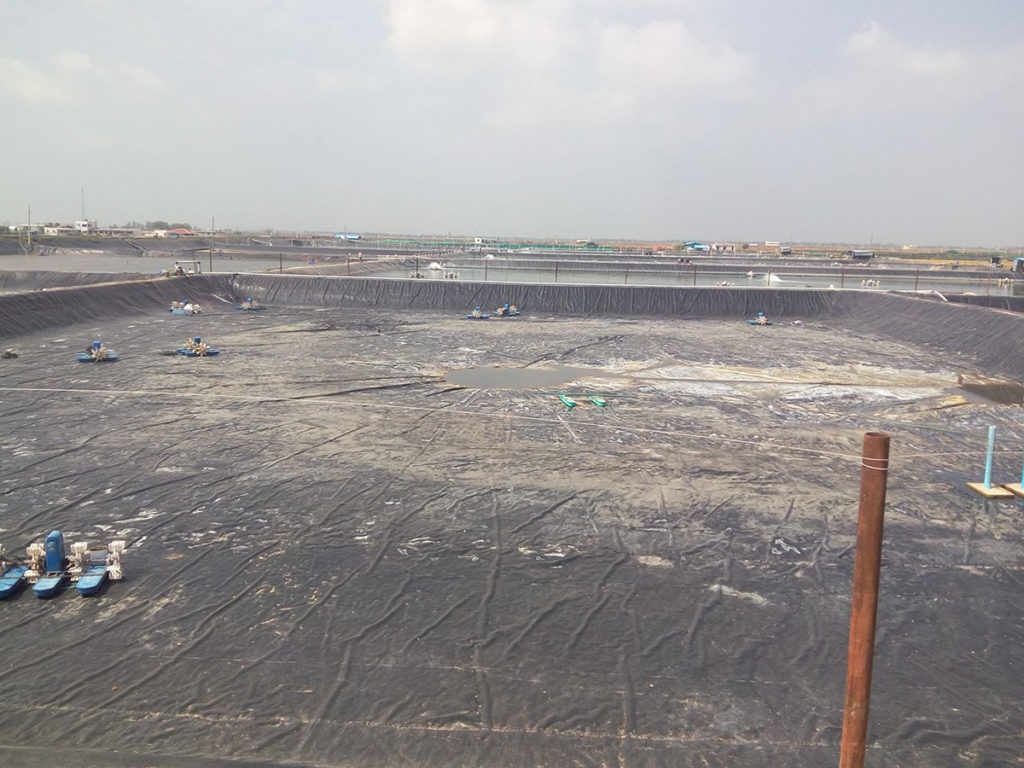
Responsibility
Appraising pond liners for shrimp culture
The use of plastic-lined ponds by shrimp farmers can significantly improve production efficiency, support more production cycles per year, and higher mechanical aeration rates and stocking densities. The capital cost of lining ponds can be very significant, so a thorough feasibility analysis is recommended when considering this production tool.


